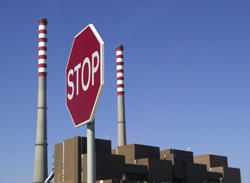Removing carbon dioxide from syngas before combustion
Carbon capture and storage (CCS) schemes that reduce carbon dioxide (CO2) release into the atmosphere are urgently needed during this transition phase. EU funding of the project 'Carbon-free electricity by SEWGS: Advanced materials, reactor and process design' (CAESAR) enabled researchers to achieve a major breakthrough in CO2 sorbent capacity. This could prove to be promising for application in pre-combustion CO2 capture technology. The sorption-enhanced water gas shift (SEWGS) process removes CO2 from a high-temperature and -pressure syngas stream. This is achieved by passing it through multiple vessels filled with a catalytically active CO2 adsorbent. The result is an essentially carbon-free, hydrogen-rich product stream. Initially developed and tested within a Sixth Framework Programme (FP6) project, the SEWGS process was further developed within the context of CAESAR. The aim was to reduce the energy penalty and CO2 capture costs by developing better sorbents. After testing over 400 different options, scientists arrived at the patented formulation ALKASORB. This reduced CO2 capture costs by 15 %, and decreased energy used per tonne of CO2 avoided by 30 % in comparison to conventional technology. To further decrease costs and increase competitiveness with post-combustion CO2 capture technologies, development work on the sorbent continued and scientists arrived at ALKASORB+. The superior sorbent facilitated an impressive 40 % reduction in CO2 capture costs and a 44 % decrease in specific energy consumption. SEWGS technology is ready for scale-up to a pilot unit that should demonstrate technological readiness under field conditions prior to further scale-up and commercialisation. Carbon-free electricity production from fossil fuels could be just around the corner.



